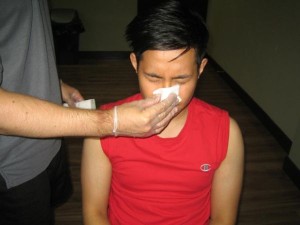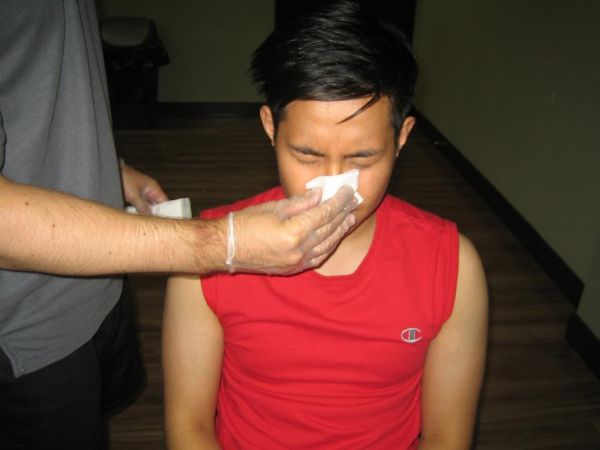
Epistaxis, commonly known as nosebleed, is a fairly common occurrence of hemorrhage from the nose. It is evident as blood simply drains out through the nostrils. These commonly occur when there is loss of blood from the tissue lining of the nose. Generally, bleeding occurs at one nostril at a time. It is not a raise serious alarm and can be easily treated at home.
Many tiny blood vessels are located in the nose that easily bleeds especially when irritated. When the membrane linings the inside of the nose become dry and irritated by the air moving through the nose, crusts form. Nose may begin bleed when these crusts are irritated by rubbing, picking or blowing the nose.
Types of Nosebleed
There are two types of nosebleeds, which differ in location. These are the anterior and posterior nosebleeds.
Anterior nosebleed (front of the nose)
- More common
- Occurs on the front nasal septum, the tissue separating the two sides of the nose, which contains any easily damaged blood vessels
- Can be easily controlled
Posterior nosebleed (back of the nose)
- Occurs higher on the septum or deeper in the nose from an artery
- Frequently occurs in elderly people
- May require hospital admission
Causes of nosebleed
Several factors may affect the membrane linings of the nose. These include:
- Allergies
- An object lodged in the nose
- Barotrauma (difference in pressure)
- Blowing the nose very hard
- Chemical irritations
- Nose picking
- Repeated sneezing
- Trauma or direct contact such as broken nose
- Upper respiratory infection
- Very cold or very dry air
*However, recurrent nosebleeds may be symptoms for an underlying disease, such as allergies, blood disorders, or tumors.
Symptoms of nosebleed
As previously mentioned, bleeding generally occurs at one nostril. The symptoms mentioned in the following are those associated with heavy bleeding:
- Both nostrils bleeding due to overflow in the nasopharynx
- Vomiting or spitting blood as a result of swallowing blood and irritating the stomach
- Dizziness and light-headedness
- Confusion and fainting
- Bleeding in urine or bowels
Treatment of Nosebleed
Nosebleeds can be easily treated at home, without the need of a doctor. Only visit a doctor when severe bleeding occurs, although this is highly unlikely the case. The following steps are recommended in cases of nosebleeds:
- Sit upright and lean forward. This will decrease blood
pressure in the veins of the nose an discourages bleeding.
- Using the thumb and index finger, pinch al the nostrils together for five to ten minutes. Breathing must be done through the mouth.
- Avoid picking or bowing the nose to prevent re-bleeding. Keep the head higher than the heart level.
- Ice pack may be applied to the nose and cheek to soothe the area.
It is strongly advised for parents to take first aid and CPR courses in cases of medical emergencies.First aid training offers valuable information for various everyday first aid scenarios, such as headaches, fevers and nosebleeds.

